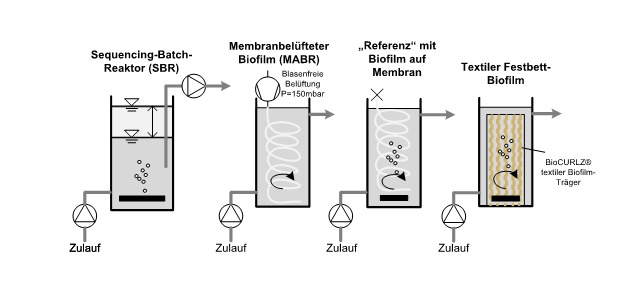Optimal conditions for biological treatment of wastewater with high refractory content have been identified in laboratory experiments with synthetic wastewater. High(er) sludge age and O2 concentrations are critical, as are low sludge loading and separate treatment of poorly degradable wastewater.
Industrial wastewater poses a particular challenge for biological treatment due to, among other things, higher refractory (difficult or non-degradable) fractions. Refractory substances are present in high concentrations in wastewater, especially in the chemical, paper, textile and food industries. If the multiple use of water in the industrial sector is to be implemented, increased attention must be paid to the elimination/reduction of these substances in order to avoid an accumulation through recirculation with corresponding qualitative restrictions.
It is known from the operation of industrial wastewater treatment plants that higher degrees of degradation can be achieved with some biological process types, such as biofilm or membrane bioreactors, compared to the conventional activated sludge process.
In the WaReIP project, the operating conditions for biological treatment that are crucial for further degradation were identified. Laboratory tests with synthetic wastewater (methylcellulose and biologically pre-treated municipal wastewater) on different reactor types showed that after sufficient adaptation time (>1/2 year), a high sludge age and high O2 conc. (>>2 mg/L) resulted in a 45% improvement of the effluent value compared to the Zahn-Wellens test. In addition, difficult-to-degrade sub-streams should be treated separately, if possible, to allow the biocenosis to adapt to the difficult-to-degrade materials as much as possible. If this is not possible, cascade processes have proven successful in order to eliminate easily degradable substances first.


